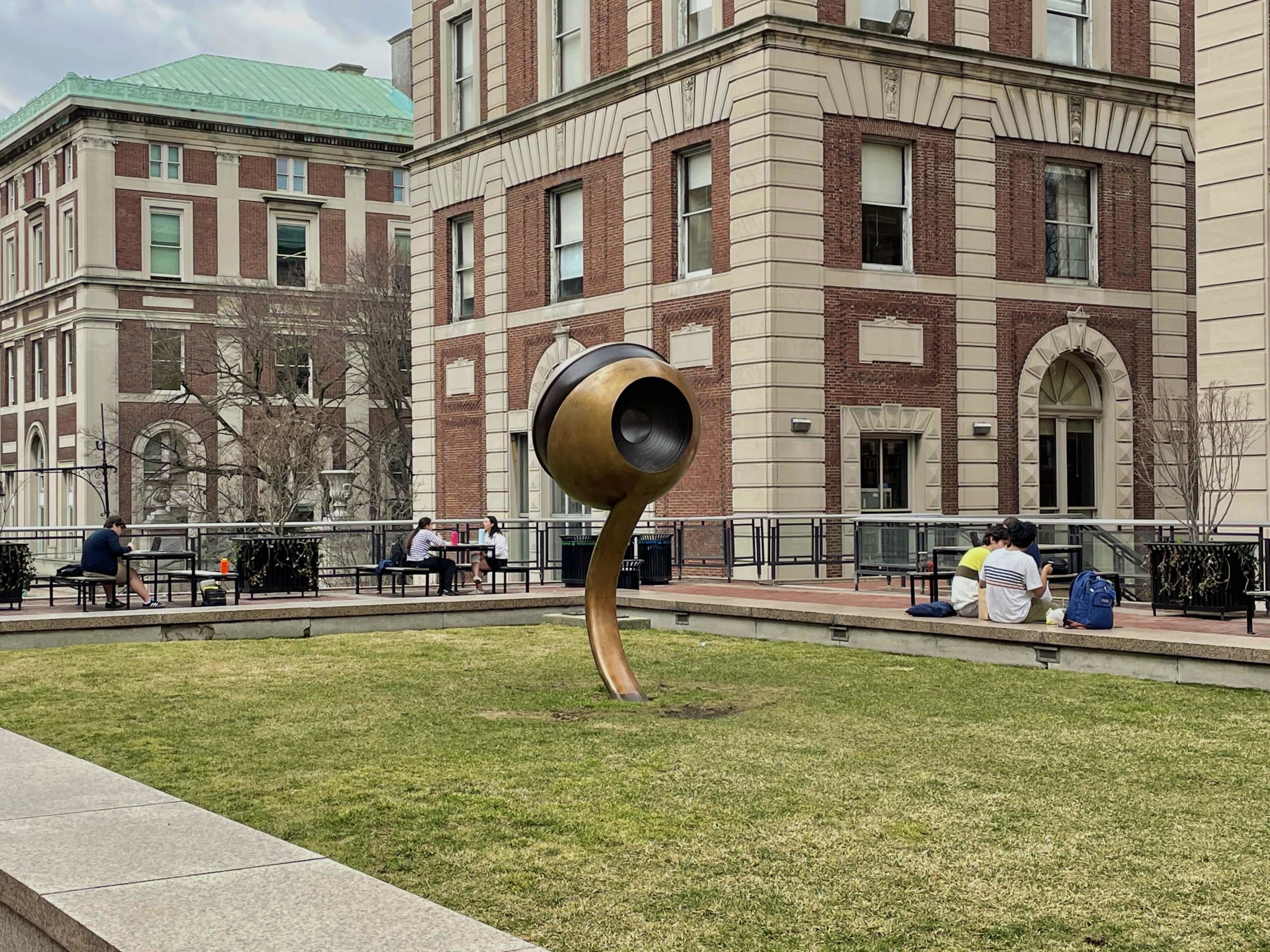Kind of looks like a periscope…or an eye!
Name: Life Force
Who:
Artist: David Bakalar. A Boston native, born in 1924. Bakalar studied Physics at Harvard, graduating in 1947 with a bachelor’s in science. He would complete his master’s degree in 1948, also at Harvard, and three years later he would get a doctor of science (Ph.D.) in Physical Metallurgy (Physics) from MIT. Later, he was a consultant for the Marshall Plan as the United States invested in the rebuilding of Western Europe. He was involved in the development of Transistors as he formed a transistor manufacturing company with his brother. During the 1950s, Bakalar became interested in art collection. It was not until he was 62 with the recommendation from his friend George Segal that Bakalar began sculpture. Bakalar’s sculptures are made of stone and metal, exploring natural and geometric shapes. He describes himself as an “abstract surrealist.”
What:
The Image: A sphere resting on an arched stem. A hole carved through the sphere as a diameter. It is conically shaped, where the edge of the hole meets the surface of the sphere at a much larger size. An indented ring around the sphere. Two concentric circles are seen within the ring. One angle is not enough to observe the entire form. Instead, the viewer must move around from all sides.
The Statue: Bronze. Around seven feet tall.
Where: Before the installation at Columbia, unknown. Currently at Charles H. Revson Plaza—the lawn on Amsterdam/Law School Bridge.
When: Life Force was gifted to Columbia Law School by an anonymous donor in 1992. It was in memory of alumnus Ruth Goldman Schapiro, from the Law School class of 1950.
Why: While Life Force was not constructed for Columbia, we can speculate on its meaning. One thing to note is how Bakalar’s style combines organic and logical forms in his sculptures. This could potentially evoke a similar theme as Bellerophon Taming Pegasus, where there is a dynamic interplay between those two forces in the fields of law or public affairs (the two buildings in closest proximity). Alternatively, the hole cut through Life Force gazes down Amsterdam avenue. The bridge provides a stunning view of the epicenter of Manhattan. Perhaps the hole, much like an eye, reminds the viewer of the latter half of Columbia’s name: In the City of New York. Bakalar has stated that the work represents “the bonding forces — the birth force, the death force, the competitive force, and the nurturant force.”

Both Life Force photos via author


 0 Comments
0 Comments